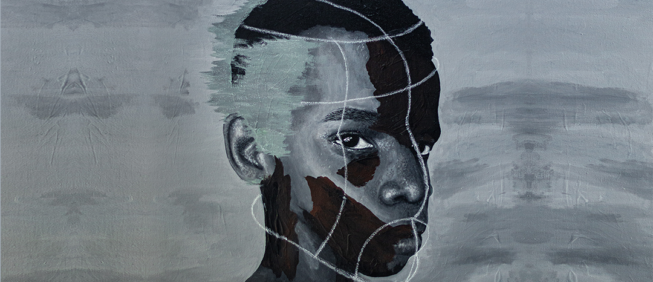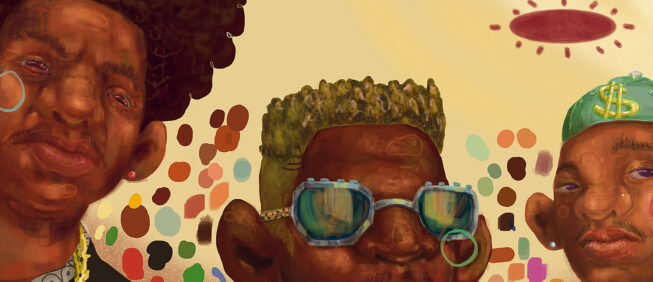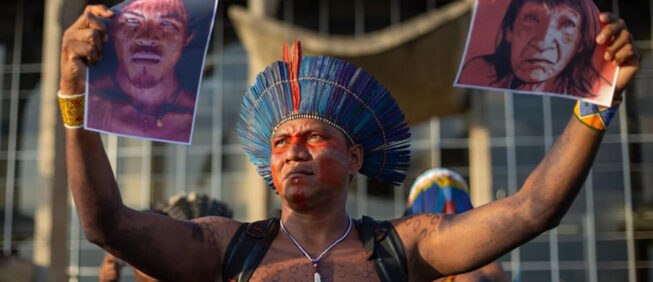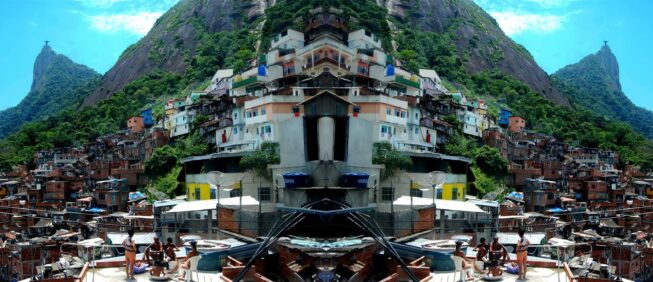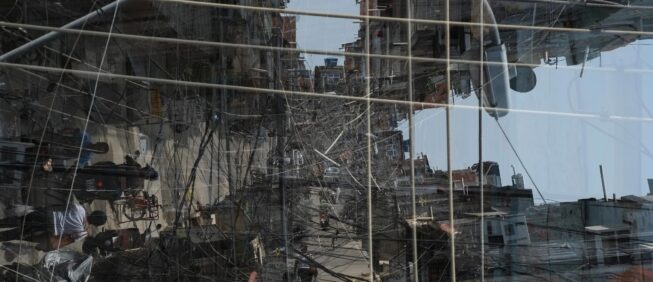“Beyond the semantics of human rights”
Interview with Pia Oberoi, Senior Advisor on Migration and Human Rights for the Asia Pacific Region of the United Nations High Comission for Human Rights — OHCHR
by Daniel Martins and Felipe Moulin
26 de September de 2023
In recent years, Asia has experienced an exponential increase in migration across a vast territory, added to cultural, ethnic, political, religious, and economic complexities. How are migration flows within Asia reshaping our understanding and approach to migration?
Pia Oberoi: When we look at Asia Pacific, it is sometimes difficult to set the boundaries of where it starts, and where it finishes. At least 50% of the world population lives in this region. In one way, it is not surprising that they form the majority of migrants. Most Asians stay within the region. This is also typical, as we know that most migration occurs within the places where people have the resources to travel. Asians will primarily travel to neighbouring countries and regions, or further afield, depending on their resources.
At least 50% of the world population lives in this region. In one way, it is not surprising that they form the majority of migrants
It is also interesting to observe the number of Asians who are moving to different continents. Europe has always been part of this journey, and there was a point over the last three years where Bangladeshis formed the majority of those making the move across the Central Mediterranean — from Libya to Italy —, and some of them travelling further. It demonstrates people’s ability to find resources, because to travel from Bangladesh to Libya, China, or the Darien Gap, you need resources.
I have just read a report about the Rohingyas, which revealed the number of Asian nationalities that are represented in this movement. Of course, they are not the majority of the movement in Northern Central Asia, but they are there, and also on other precarious pathways, I imagine.
Part of that obviously is long, well-established pathways. You can talk about intermediaries in the context of the recruitment of intermediaries, but you see the smugglers and brokers who are creating pathways for people to move. It represents a substantial number of the movements we see in Asia, even within the region. It is complex but also a microcosm of what we see in other regions.
If we think about why people move in every part of the world, most people move to find work, because, of course, this is how they manage to survive. Labour migration is part of every single movement, even if we are talking about refugee movements, or even smuggled migrants, or others. The search for work, or decent jobs is, of course, massive. Most of the movement from Asia, and within Asia, is labour migration.
Unfortunately, and for us, as researchers, what I find sometimes in Asia is less of a search for vulnerabilities that go beyond the person as a worker. Earlier this year, we launched a report on temporary labour migration programmes within and from the Asia-Pacific region, entitled “We wanted workers but human beings came”.
I feel that, in Asia, there is this idea that when we look at migration, we only look at workers, and we only need to understand their lives within their workplaces.
I feel that, in Asia, there is this idea that when we look at migration, we only look at workers, and we only need to understand their lives within their workplaces
If we do not try to understand the ways in which people are vulnerable, have lives and aspirations, such as the need for family life, that does become a bit frustrating.
The other thing about Asia is that you have very rich countries like Japan or Korea, and very impoverished ones, such as Nepal or Laos, and there are middle-income countries such as India, Malaysia and Thailand. In a sense, there is a kind of microcosm of the world as well, and that is where we see a lot of the complexity coming in. There are also refugee-producing countries, such as Myanmar, which, unfortunately, is producing more and more refugees now. And also Afghanistan. Asia has all types of movements.
What is the role of Thailand in the Asian migration context?
Thailand is interesting because it is a country of origin — not only for the region, a lot of Thai workers go to Korea and we have recently seen an expressive number of Thai migrants in Sweden —, but it is also a destination country. So we have migrant workers from Laos, Myanmar, and South Asia, and there are also Rohingya refugees. There is this really interesting phenomenon, that it has become a transit country.
We have just published a report entitled "Online scam operations and trafficking into forced criminality in Southeast Asia". Many casinos are located in this region, in conflict-affected border areas and transit zones, especially economic zones. They had to close the casinos because of Covid restrictions, and this extended for a long time in Asia, until Spring 2022. So we had a long shutdown. People were being trafficked into these operations, and forced to work as scammers, persuading people to send money to them. Over the last 2 years, we have hundreds of thousands of people in Myanmar, Laos, Cambodia and, increasingly, in the Philippines, who have been trafficked.
Over the last 2 years, we have hundreds of thousands of people in Myanmar, Laos, Cambodia and, increasingly, in the Philippines, who have been trafficked
I read a case of a person who came from Brazil, and was caught and rescued from one of these scam centres. The conditions they endured in these places were appalling; they were imprisoned and forced to reach targets for how much money they should scam from people, and they were tortured, deprived of food and couldn't leave. People have died trying to escape, and also because they did not receive any health care.
If we think about how to respond to these types of situations in the region, most people who are released from these centres are then treated either as criminals, because they committed a crime, or as illegal immigrants, as they have no papers, visa, or work permits. Many people are held in detention, as they are not able to attain any support from their homes or embassies.
It is intriguing that Thailand has become this transit country. There are many of these centres on the Thailand-Myanmar border. People are being re-trafficked between Myanmar, to Cambodia, through Thailand. It is a horrible situation which is likely to get worse.
Thailand has a specific relation with the sea and the fishing industry. We know that migration flows also have a legal and illegal relation with this market — especially with migrants arriving from Laos and Cambodia. What is the relation between the sea, the fishing industry, and migration?
There are two ways in which Thailand participates in these movements. First, the fishing industry has been well-known for a long time, for having very difficult working conditions; sometimes these practices have veered towards exploitation, where you have people that had been literally imprisoned. Most were on boats out at sea, working in deep-sea fishing. There have been a number of concerns, especially related to trafficking for labour exploitation.
People are not coming to become slaves on boats. They are arriving with the expectation that they have a specific job, with decent working conditions. Therefore, you have a disconnect between the conditions that are offered in their contracts; also, sometimes the workers are illiterate and cannot read the paperwork.
The other way is being challenged by the sea in the movement of Rohingya refugees from Myanmar. This is a regional issue, not only for Thailand, but also for Malaysia and Indonesia, which have coastlines but do not enforce sea protection. Last year was the deadliest year for people who travelled by boat since 2016. We had over 2,000 movements, 300 or 400 people died and many more are missing at sea. It is a very dangerous movement. Thousands are losing their lives.
And there is very little of a structured response from governments on protecting the rights of people within Asia. We talked about the fact that it is a large region and there are many countries involved. And if we look at protecting people at sea, there is not a good search or a rescue response. There is no good disembarkation response. The boats are not allowed to land. People have been dying at sea because they have been sent back.
Despite the different contexts, experiences, and motivations, there is a well-constructed idea that everything is illegal, and the destination countries are victims. What prevents a human rights based approach to people on the move?
Starting with Asia, but also going a bit further. There is a specific problem in Asia: it is the region of the world where, across the board, you see least ratifications of international human rights treaties. We see that there isn’t a good understanding, or acceptance, of human rights as an organising principle of society.
There are a lot of challenges and push-back, and the idea that Asian values are different to human rights: “We do not need these Western things called human rights.” Which means, with some exceptions, if you look generally, like Thailand or India, they do not have an asylum framework, there is no legal refugee protection framework.
It is a very transactional approach to migration. “We will take you when we need to. You will come to work on houses, in factories, fishing, and so on. When we don't need you anymore, you have to go. You don't have rights while you are here, so you don't need access to your family or your children, or good health care, because you are only here to work. And if you manage to get here as a refugee, you are illegal, so you are in detention.”
This kind of transaction. An instrumental depiction of people on the move has become more and more prevalent, pretty much everywhere.
I also think this is beyond. In countries in Europe and America there is this idea that labour migration needs to be as temporary as possible. Citizenship is not something available as a right for people who have been there for 15 or even 20 years. Your ties to the country become extremely fragile, even if you have lived there for a long time.
Of course everybody has human rights. From the moment you set foot in the country, you have rights because you are in that country, whether you are illegal or not. But it has become the other way around. You have countries in Europe, for instance in the UK, that are removing citizenship from people on the basis that they are a threat to the society.
The idea is “if you are in an irregular situation, we assume that you are not a human being at all”. That is something they have perfected in Asia because it is about criminalisation. Once you criminalise, you polarise juridically. So, you are not just illegal in the eyes of the law, but you become a kind of a non-person in the eyes of the public and the government. That is very dangerous.
That is something they have perfected in Asia because it is about criminalisation. Once you criminalise, you polarise juridically. So, you are not just illegal in the eyes of the law, but you become a kind of a non-person in the eyes of the public and the government. That is very dangerous
In a world much more connected in so many ways, in a technological or financial point of view, it is striking that the way in which there are so many walls, is the actual physical movements of people. And I fear that this is going to get increasingly worse.
Even as academics, every day we hear about people trying to travel from one conference to another, and because they come from a particular part of the world, they can not get a visa.
There are also restrictions in terms of flights. If you try to travel South-South, it is much more difficult than if you just want to go from Europe to another part of the world. It is a concern, and something that should be questioned, not only by activists, but by researchers and academics.
Are there disparities in Asia on how migrants are granted rights?
You have countries that have better systems. Thailand is quite an interesting example. Once there were concerns around trafficking people from Myanmar, structural responses were put in place. Japan and the Republic of Korea are signatories to the 1951 Refugee Convention. They have put in place an asylum system that, in theory, provides all the associated rights, and is what we would call a developed asylum system. However, the recognition rate is very low and very few people are granted asylum.
Countries such as Australia and New Zealand, which are, of course, part of the Asia-Pacific, have both the asylum system and labour migration programmes. It is not to say that it is a terrible situation. The challenge is, if we go back to countries in East Asia, the idea of “who deserves rights” is very entrenched.
This is not an unusual discussion in Asia, and is part of how asylum and migration governance systems have been organised pretty much throughout the world. What we are really trying to do at the OHCHR is not to say “get rid of refugee protection, or get rid of protection for trafficked persons”, but to say “rights should not exist in silos”.
The idea, also the US and Europe, is that you judge one person against another. One deserves rights because they are a refugee under the 1951 Convention, and I have obligations under that. The other does not deserve rights because they are an irregular migrant who has come to join their family; just to give a theoretical example.
The way that our systems of governance and migration are organised, they are not really compatible with universal human rights
Under human rights law, everybody has the right to family life. But the way that our systems of governance and migration are organised, they are not really compatible with universal human rights.
We are trying to advise on the construction of pathways that people can either come, or stay, legally, even if they are not refugees. They might want to be with their family, they might be fleeing climate change and environmental disasters.
There is no provision — even in the Pacific, where literally it has become a question of life or death, and people will either sink or swim, as their islands no longer exist — and we do not have any pathways in the region to provide for some sort of answer. There are Australian-New Zealand refugee protection pathways, but nothing for people who are going to be facing real challenges, as climate change accelerates.
This is not unusual. Apart from this real reluctance in much of Asia to ratify human rights treaties, there is not much difference, it is the same challenges that the rest of the world is going to face. At the moment I do not think we have the right answers.
How can we construct a shared human rights framework and approach?
We have been conducting this work at OHCHR since 2010, and I had been doing this work with NGOs for ten years before that. I spent a lot of time speaking to governments and trying to change their minds about what they are doing, because we do not think they are getting migration governance right. I very clearly remember hearing from a representative from Germany, who came to talk at the height of the refugee and migration “crisis” in Europe in 2015. He reached out to OHCHR, to essentially say ''We know we have to improve the protection of rights, but the public will not allow it, because there are too many people, and we are being engulfed. So, first we need to change the public’s minds, then we can do better as a government".
What we have been trying in recent years is, primarily: if you say the problem is how the public feels about migration, then we need to have a better sense of these feelings. What are their attitudes? What are their perceptions? And what can change their minds?
In recent years, we have been conducting large-scale survey work in Malaysia and Australia, to really try to understand this polarised debate of: “Do you support refugee rights or do you support migrant workers?” So, it is actually civil society fighting against each other the public are confused, and neither of these governments — which was different in the case of Australia then — wanted to protect any rights.
What is fascinating in the research — which is quite representative, a big data survey with 1,200 people in each country, a quantitative survey and more qualitative focus group work — is that the majority of people in both of these countries felt that human rights were an important value to society. So, a decent society protects human rights.
Very significantly, with a slight difference with Australia and Malaysia, for many reasons, they also felt that welcoming people from other countries was also the sign of a decent society. And that was something that, as society, they should do. We should welcome people. And the other quite interesting thing was that in both countries, when we asked how happy they were with their government’s current migration policies, almost 45% of them said "We have no idea. It is a complex situation and we don't understand it”. So, that's why people avoid it, but when you start asking:
Do you feel you should welcome people from other countries? Do you feel sympathy for people who are suffering? Would you accept people who are fleeing persecution? The answer is yes to all three questions.
The same amount of people said we should accept people who are fleeing economic destitution. The idea that a refugee is more accepted than an economic migrant was not demonstrated in our research, in either of these countries.
The challenge is going beyond the semantics of human rights — because it is becoming a cultural war issue — and really look at how communities work
The solution is going closer to where people are. These big debates about whether migrants produce benefits economically. Yes, as economists, at the global level, absolutely, you should raise these arguments with governments, but it just confuses people.
Someone can say that, statistically, migrants add 12% to the GDP, but people do not understand that. But they understand when they say that their children are going to school with people with migrant backgrounds, or have neighbours working down at the post office who are migrant.
When it becomes closer to people's communities, and we saw this in the research — when it comes closer to people, then it becomes more real. There may be some minor conflicts, but we did not see that from our research, of people saying to not accept migrants, or people on the move.
The challenge is going beyond the semantics of human rights — because it is becoming a cultural war issue — and really look at how communities work. To give tools to people and leaders within communities and create inclusion and integration policies. It has become an identity issue, it has become a very effective way of dividing people. The more we put those noises aside and have moments of connection, is when we will see rights being protected.
What were the most important achievements for OHCHR in the last two decades? What are the challenges?
The challenges are around this kind of global retreat. There was a moment in the 1990s, and maybe 9/11 changed it at some point, there was almost a global acceptance of the relevance of a human rights framework. Now, we are so far from it. We have challenges to set human rights as the organising principles of societies around the world. Of course it is a challenge for our society, but as well as for OHCHR, as the guardian of human rights within the international system and within the UN.
The challenges are also in our own making, because we are very technocratic about human rights. We are lawyers, and the language we use, and the issues that we choose to address, often tend to be seen as quite esoteric. It is the first time in OHCHR's history that we have conducted this kind of behaviourally informed research. And this is something we are going to change, if we really want to understand the whole issue. Human rights are such a fundamental part, they are not part of something on a high level political issue, they are really about you, and your life, and how your family, and your children are going to live.
We have challenges to set human rights as the organising principles of societies around the world. Of course it is a challenge for our society, but as well as for OHCHR, as the guardian of human rights within the international system and within the UN
When I started at OHCHR, we were just starting to set up a programme on migration and human rights for the office at the global level. The challenge there was, ironically, given the universal framework of human rights, to see where we would fit, add value, and where we could bring a voice for human rights and migrants.
Of course, you have UNHCR, ILO, IOM, and UN Women among others. Very consciously, we made the decision to focus on where we could add value. Not to only say that refugees don’t have human rights or all migrant workers don’t have human rights, but we started to look at the in-between areas. For instance, the work we carried out on human rights at international borders, which was really not about refugee protection, but about the rights of all people at borders.
Every person crosses international borders once in a while, and we are all facing various degrees of discrimination and profiling, and we need to help state members understand when that is unacceptable.
For instance, treating people from different parts of the world differently, such as people coming from South-South migration. We are quite proud of being able to do this, and bringing these added values.

Pia Oberoi | INDIA |
Senior Advisor on Migration and Human Rights for the Asia Pacific Region based in the Bangkok office of the United Nations Human Rights Office (OHCHR) responsible for developing and implementing research and policy on migration and human rights in the region. Previous to this function, she was the Head of global migration team at OHCHR where she headed the Office’s global work on policy and legal issues related to the human rights of all migrants and the intersections between migration and human rights.
Before that, she led the migrants’ rights work of Amnesty International’s International Secretariat, and has been an expert consultant for NGOs and policy think tanks in the Asia Pacific region and around the world. Pia has published and lectured
extensively on migration and human rights issues, and holds a DPhil in International Relations from St Antony’s College, Oxford University.


